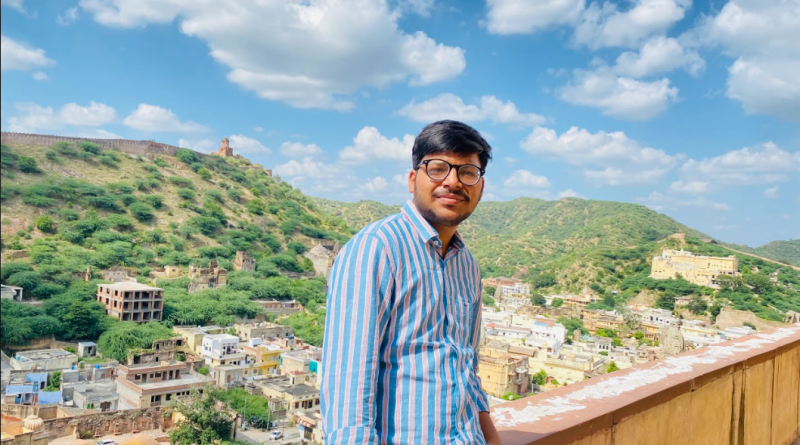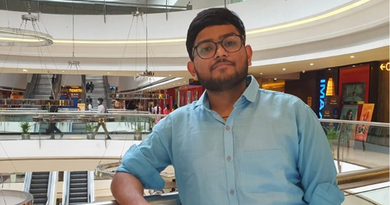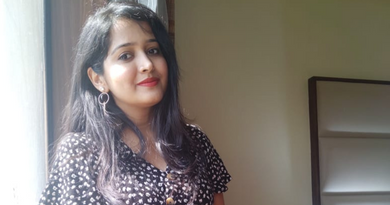Internship at IIT Bombay: My contribution to open-source software!

About the Author: K Prabhu Teja from National Institue of Technology, Surathkal, talks about his experience of working on a FOSSEE project at his dream institute – IIT Bombay.
“The most unfortunate thing is that India still seems to believe in proprietary solutions. Further spread of IT, which is influencing the daily life of individuals, would have a devastating effect on the lives of society due to any small shift in the business practice involving these proprietary solutions. It is precisely for these reasons open-source software needs to be built, which would be cost-effective for the entire society. In India, open-source code software will have to come and stay in a big way for the benefit of our billion people.”
– Dr. Abdul Kalam
From launching satellites and creating 3D printers to developing applications, engineering fraternity contributes a lot to the society. Having graduated from a private college which people referred to as a not-so-good college, I aced GATE to end up with a Chemical Plant Design masters’ course at NIT, Surathkal. Having landed at one of the top colleges in India, life beamed with some hope. Little did I know that a lot of hard work was still required if I didn’t want my career graph to take a downward slope. I had done my undergraduate project in Super Critical Fluid Extraction of Natural products using Carbon Dioxide. Research in that area is a part of Green technology which only IIT Bombay (IITB) can boast of working on.
One fine day, I referred to IITB’s web page. I composed a detailed email on how the current topic was a part of my undergraduate project. Expecting a reply, I was constantly checking my emails which, to my disappointment, yielded nothing. A few days later, I got a call from an IITB professor. I answered and nodded for most of the questions while still trying to digest the fact that a professor was open to me working under him. Little did I know, he would give me enough freedom that I could work with him. He coined a word FOSSEE during our conversations. Upon researching about it, I found that any engineer can and should work on that project. Free and Open Source Software for Engineering and Education (FOSSEE) is an initiative taken up by IITB. It comprises of simulation software, which is free in comparison to the software which needs to be licensed. For instance, MATLAB is a powerful computational tool; however, most colleges in India do not have the official license to provide a course credit to their students; open-source software fills that void.
FOSSEE starts recruitment for its various open-source platforms with an official notification. First, I had to register and sign up in my area of interest and was advised to install the software. Then, FOSSEE representatives emailed back with a questionnaire along with an assignment. I was expected to compile and run their code and come up with relevant results. Video tutorials are available on the web pages of respective open-source platforms to aid with the fundamentals. The problem statement is usually an extension of the aforementioned tutorials. Delving deep into the fundamentals, playing around with the available tools is the key to run an expected simulation. I was interested in DWSIM, an open-source alternative to conventional chemical engineering specific simulators like ASPEN, PRO II, etc. When queried about my level of understanding on its basics, I reverted with the simulation results of the assignment given at the end of each video tutorial. After they got an idea about the kind of work I could do, I was roped in for the Flowsheeting project.
Freedom started right from that stage. Walking into the IITB campus, which was a long lost dream, felt extremely emotional. Kannan Sir briefed me about the basics of the software, kind of work expected, and the freedom to work at my own pace. My work basically involved simulating the flow paths of a process which industries follow in real-time. There used to be a regular gathering of the team to discuss the work pace, issues involved, and the extent of implementation of ideas agreed in the former meeting. Selecting appropriate model from a big list and proving that DWSIM can simulate complex systems in a similar time domain of conventional packages were some issues we worked on. It took more than a 9 to 5 routine to complete the tasks. A number of cross references and detailed discussions with the faculty coupled with a desire to go down the path less traveled were required for any success.
Are you also a chemical engineer who is itching to leave a mark? Check out these awesome internships in chemical engineering.
Editor’s note – If you also have an interesting story to share, you can now participate in Your Internship Story Contest 2017 and win cash prizes and goodies worth INR 1 Lac!



